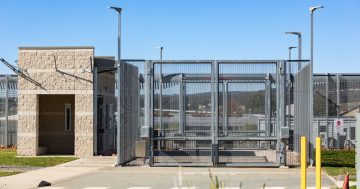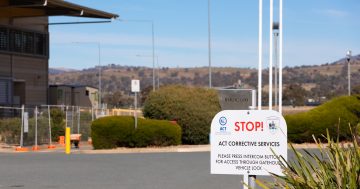
A number of years ago, the US gained some infamy by having over one million people in its jails. I heard, in about 2002 or 2003 or thereabouts, that American Correction Services (ACS), built a 600-bed prison in California and then offered it to the State government for use in its prison system. The Californians were into private prisons at that stage.
Blatant case of if you build it, they will fill it.
Such was the fear in the ACT in the lead up to the emergence of a prison here. Many commented that if we had such a facility here, it would be filled quickly but denied by advisers to government (of both persuasions).
The judiciary said, oh no! We won’t take advantage of the new prison. The economic number crunchers said there will be a slow growth in offenders such that we will have spare capacity for many years. This resulted in the reduction in the number of beds at the AMC. Got that one wrong, eh?
Indeed, I thought at the time that we would have such spare capacity that we could take people from regional NSW, particularly female offenders to make up the critical mass required for successful restorative programs.
I did think that it was more important socially to accept and have responsibility for our own offenders than to send them to NSW jails. I had hoped that our more compassionate approach would pay dividends in the end. Indeed, anyone who has been into any one of the NSW prisons would not describe them as human rights compliant. We hoped that building one from scratch and not inheriting the prison culture from NSW would put us in good stead to assist in the restoration of our community, our victims, the families of perpetrators and the offenders themselves.
The thing is though, that prisons and remand institutions in particular, don’t have a major role in preventing crimes. Sure, they have a deterrent element, but mostly, crimes, particularly those of a white collar variety, domestic violence and sexual predation, and often drunken charged violence are not deterred by the prospect of imprisonment.
Also remember that remand is a precursor to a court appearance and not as a result of sentencing. These detainees are actually innocent until proven guilty at court.
So are the courts and police being overzealous or are they extremely effective in putting people behind bars at public expense?
The AMC is full, requiring the Band-Aid solution of Symonston, not because it is failing, but because the systems in place to lower the number of people being dragged before the courts are not working.
Some people call for more hard line attitudes to the granting of bail (and probably rightly, too), but they should not then blame the AMC for being overcrowded as a result.
I see the need to use the unsatisfactory Symonston solution as a failure in the prevention system more so than in the corrective services system. The corrective services system kicks in after an offence has occurred. Sure, it tries to address reoffending but remember that its initial role is after an offence has occurred.
As a reflection of community attitude, the judicial system, as opposed to the policing system, should have a role in advising the executive (read – Governments) of proactive opportunities to stop offences occurring in the first place and it is the job of the Executive to lead the community in preventive programs and initiatives to reduce the number of offences taking place.
The police are an arm of the executive, whether they like it or not and thus are part of that preventative strategy, or lack of it. But it is not the police’s fault that offences occur, rather the community’s propensity to harm itself which is at fault.
I applaud the anti-crime measures by the police and in fact, in relation to domestic violence, that also of The Canberra Times. The question remains. Why is it so that offences seem to be continuing to occur and seem to be increasing?
I don’t know the answer but I do know that the AMC is not responsible and should not be criticized because it is full. I also know that Symonston is definitely not the answer.
Maybe some of you do know the answer.



















